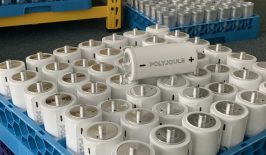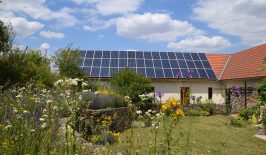For renewable energies to continue to play an important role in combating the climate catastrophe, more efficient and affordable renewable energy storage solutions need to be developed.
There are already a plethora of different approaches to storing renewable power. These include storing energy as heat in stones or salt, within large flywheels and by lifting weights within disused mine shafts. However, the most convenient source of energy storage still seems to be large lithium-ion batteries, which come with high costs and the requirement for mined metals such as cobalt and lithium.
But a UK-based startup is looking to provide a cheaper, more efficient and more convenient method. RheEnergise is looking to revamp the way we approach pumped hydro-storage, one of the most widely used forms of renewable energy storage.
Pumped hydro involves pumping water up a hill during times of cheap renewable power, and then letting it flow down the hill through power turbines when electricity demand is higher. Surplus power is stored as potential kinetic energy within reservoirs buried into hills.
Currently, pumped storage makes up around 90 percent of mechanical storage solutions worldwide, but as with other approaches, it has its downsides. Firstly, it requires extensive construction and engineering costs, as well as earth extraction and the damming and redirection of water. Pumped hydro also requires specific geographic considerations, most notably a hill high enough and steep enough to produce enough energy to make the system worthwhile. Although one Australian study identified 616,000 potentially suitable sites worldwide, these geographic considerations still limit the uptake of pumped hydro.
RheEnergise’s approach is to fundamentally change one of the most critical elements involved — the water. Instead of using water, the RheEnergise team has developed R-19, an environmentally benign mineral-rich solution which is around 2.5 times denser than water. By using a denser liquid within the reservoirs, more pressure is applied to the turbines, resulting in more power output. One significant advantage is that since more power is generated, the entire system can be smaller and installed on lower hills.
For example, the change in density largely correlates to a change in power output and scale reduction of the complex. Since the liquid is about twice as dense, it generates around double the power of water, meaning the pipes and reservoirs can be half as large. Taken all together, this means hills half as high as traditional pumped storage can also be used, potentially opening up 6,500 new sites in the UK alone. Altogether, this results in a reduction of construction costs, which generally make up 65 percent of any pumped hydro project, and less environmental destruction.
RheEnergise Demonstration Day – Canada from RheEnergise: Stephen Crosher on Vimeo.
This power-boosting potential of R-19 was recently confirmed during experiments in the summer of 2022, and the RheEnergise team is now moving forward with a demonstrator model close to Plymouth, UK. The current goal is to develop the first five-megawatt grid-scale facility by 2026, although ultimately RheEnergise suggest its approach could be scaled up to 50 megawatts in power.









